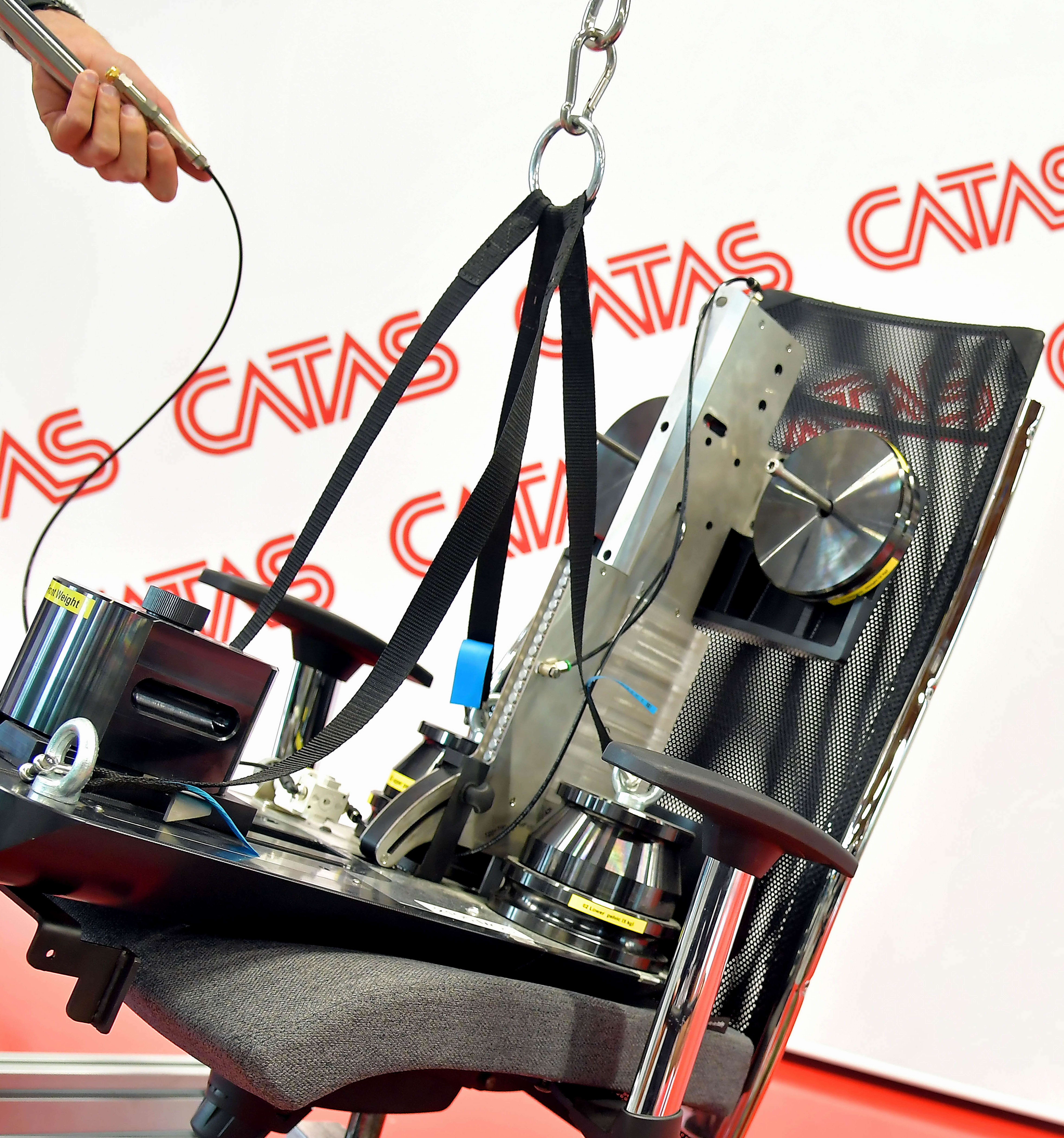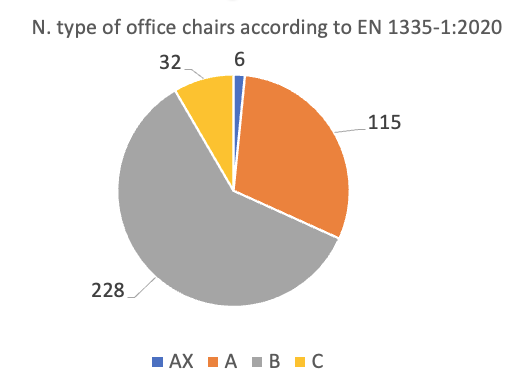
About 3 years after the release of the new standard
EN 1335-1:2020 regarding office chair dimensions, we are curious to know which of the 4 types of chairs present in the standards is the most developed and tested by our clients for the final market.
But let's step back; the European standard
EN 1335-1:2000 has been replaced, after approximately 20 years, by the new
EN 1335-1:2020, which has brought an important change. In this version, in fact, only the
dimensional requirements of the various types of chairs are defined, referring for the method of determining measurements to the internationally adopted
ISO 24496:2017.
The new method for determining measurements involves the use of a new measuring device the
CMD - Chair Measurement Device, consisting of an anatomical-shaped template and a vertical part; the total mass is 64 kg. The vertical part has 18 segments that are pushed against the backrest with a force of 3.5 N each, to determine the backrest surface and thus detect the protrusion of the lumbar support.
In November 2022, the CEN published the update of the standard, which thus becomes
EN 1335-1:2020+A1:2022. Given the numerous and profound innovations in the instrument and measurement methods, only the actual application of the standard itself has been able to highlight some gaps that left room for possible interpretations. Hence, the publication of this document was deemed necessary. However, it does not overturn the content but simply provides the necessary
details and clarifications for the correct application of measurement instruments, test methods and dimensional requirements.
Going into the specifics, let's see what the different types are characterised by:
- Type AX has the widest range of adjustments:
- seat height must have a travel equal to or greater than 160 mm;
- lumbar support must be adjustable in height with a stroke length equal to or greater than 70 mm;
- seat depth must be adjustable with a stroke length equal to or greater than 70 mm;
- armrests must have a clear adjustable distance and a stroke length equal to or greater than 100 mm
- Type A has undergone a modification in seat height:

- seat height must have a travel equal to or greater than 130 mm
- lumbar support must be adjustable in height with a stroke length equal to or greater than 70 mm;
- seat depth must be adjustable with a stroke length equal to or greater than 70 mm;
- armrests must have a clear adjustable distance and a stroke length equal to or greater than 100 mm.
- Type B:
- seat height must have a travel equal to or greater than 100 mm;
- lumbar support can be fixed or adjustable in height, with a stroke length equal to or greater than 50 mm;
- seat depth can be fixed or adjustable, with a stroke length equal to or greater than 50 mm;
- armrests can be fixed or can have a clear adjustable distance, with a stroke length equal to or greater than 50 mm.
- Type C involves minimal requirements with few adjustments.
It's worth noting that for all types, armrests and headrests are optional.
In the graph below you can see
how the tests carried out by Catas according to
EN 1335-1:2020are distributed for the 4 types of office chairs.
The data are up-to-date and refer to the period January 2021 (adoption of the new standard by UNI) – 31st December 2023.

The most tested seats and therefore probably also the most requested by the market are those of type B which therefore remain the most common.
For info:

 About 3 years after the release of the new standard EN 1335-1:2020 regarding office chair dimensions, we are curious to know which of the 4 types of chairs present in the standards is the most developed and tested by our clients for the final market.
About 3 years after the release of the new standard EN 1335-1:2020 regarding office chair dimensions, we are curious to know which of the 4 types of chairs present in the standards is the most developed and tested by our clients for the final market. 
